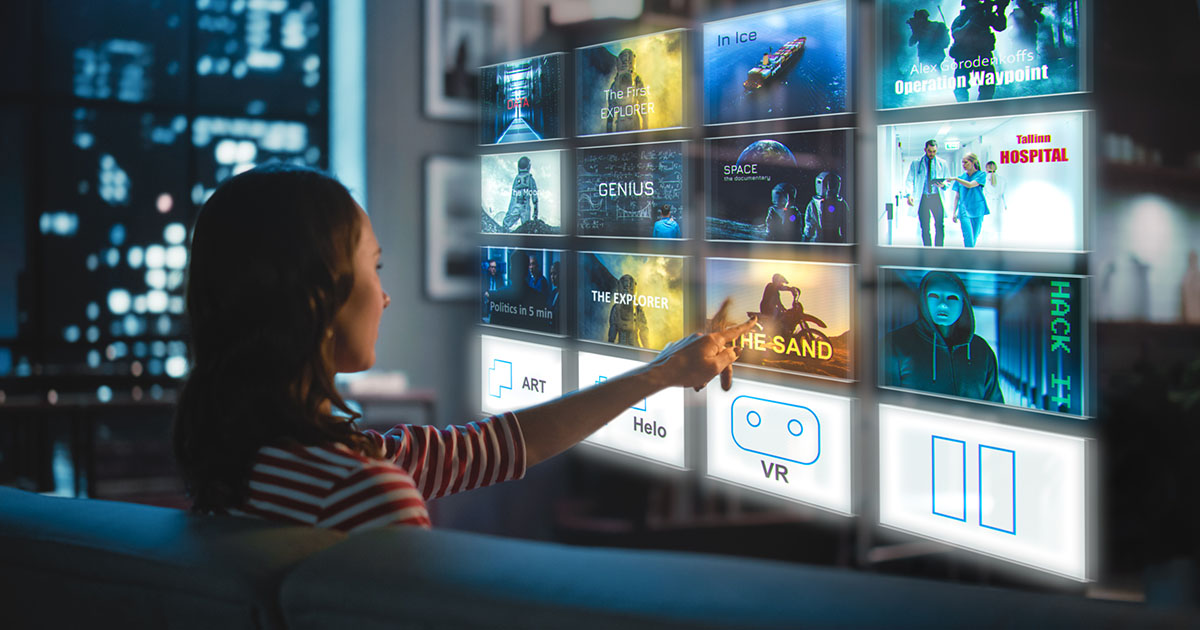The Real Winner of Summer Streaming is User Experience
By Max Newfield | September 24, 2024
Across the board, streamers are putting on championship performances in user experience. How is it paying off?
Did it feel weird trying to find something to watch this week? Was it tough to fill that Olympics sized hole in your viewing schedule?
Well you are not alone. Nearly 31 million Americans tuned into the Summer Games each day.
Among culture defining moments like the US Women’s Basketball team winning their eighth straight gold and Stephen Nedoroscik’s storybook pommel horse performance, one of the biggest stories of the games was Peacock, NBCUniversal’s’ streaming service.
The company reported a 40% increase in stream time compared to any other Olympics for a final tally of 23.5 BILLION minutes streamed. Viewers were treated to new features like Gold Zone, Multiview, and a Gen-AI daily recap to catch up on the action or find something to watch among the 300 daily live events.
Related Article: All Together Now: Why Bundling is the Latest Trend in Streaming Pricing
Wondering how A.I. can improve your audience’s viewing experience? Find out how Matchpoint can detect high quality ad breaks with the power of machine learning.
The platform received high marks for its simple, logical navigation and the addictive nature of the special features offered. Those two factors combined to drive further viewership and keep audiences in the app for longer.
Molly Solomon, the Executive Producer and President of NBC Olympics Production, told media reporter Brian Stelter that was by design.
“”For the first time, I really feel like we’ve solved the conundrum of navigation,” Solomon said. “The audience is always like, ‘I’m overwhelmed by the Summer Olympics. I can’t find what I’m looking for.’ I do think the interface and the dashboard of Peacock has really solved that.”
While Peacock has gone all-in on their interface, another streaming stalwart is taking a data-focused approach to UX.
Disney+
Earlier this summer, the Wall Street Journal got an inside look at the recent changes rolled out across Disney’s various streaming services. The company is laser focused on audience engagement with “hours per subscriber” as their north star metric.
To accomplish that, Disney is taking a data-first approach to the user experience. Content from Disney+, Hulu, and ESPN+ will be integrated across all apps and viewers will be sorted according to content preferences. The company is planning to move away from human-generated thematic suggestions and rely more heavily on algorithmic recommendations. Users can even expect email nudges to remind them to keep binging a show they started.
Perhaps most noteworthy of all, the WSJ reports Disney is developing “live channels” for users who want to watch something but don’t want to be burdened with making yet another viewing decision.
These channels would be focused on subject matter like The Simpsons or the Marvel Cinematic Universe and could feature sponsorship or advertising baked into programming. Most of us in the business would call that a FAST channel–making Disney the latest media company to embrace the return of linear programming–but we’ll see how they might or might not differ in the future.
Another major streamer is emphasizing “fast” in their customer experience… only this time it’s with regards to customer decision making.
Amazon Prime Video
Earlier this summer, Amazon introduced an overhauled Prime interface aimed at making the browsing experience more interactive. If you’ve noticed titles appear with the name of the subscription that activate them on your account, then the UX refresh has worked.
A blog post introducing the update read “We’re making it easier to quickly identify movies and series that are available at no additional cost to your Prime membership, find new blockbusters to rent or buy, and add and manage add-on subscriptions.”
Titles that require an additional transaction or subscription are now denoted with a yellow shopping bag. One has to imagine that customers are far more likely to make an extra purchase if it isn’t a surprise upon selecting a title.
What Does This Mean for Your Streaming Business?
First and foremost… content is not enough. NBCUniversal, Disney, and Amazon are three of the largest companies in the history of entertainment, with some of the most valuable film and television catalogs ever built. But if customers can’t find your content or don’t enjoy the experience of searching for it, that billion-dollar series you just greenlit might as well be a student film.
Secondly, investments in user experience drive bottom-line results.
While we don’t know exactly how many people created Peacock accounts this summer, NBC Sports President Rock Cordella said the number surpassed company expectations. It’s much needed good news for Comcast, who has struggled to retain customers in both video and broadband services.
And finally, your user experience is an extension of your brand. Netflix is famous for designing its apps to promote binge watching and Disney CEO Bog Iger acknowledged that the House of Mouse is playing catch up when it comes to technology.
Speaking of which, maybe get to work on your UX overhaul sooner rather than later because a Netflix update looms in the near future and who knows what that means for the rest of us.
Need help building a better user experience? Want to launch premium apps but don’t have the time or expertise? Matchpoint Blueprint is here to help. Schedule time with a Matchpoint expert to find out how it works today.
MATCHPOINT SPARK BLOG

